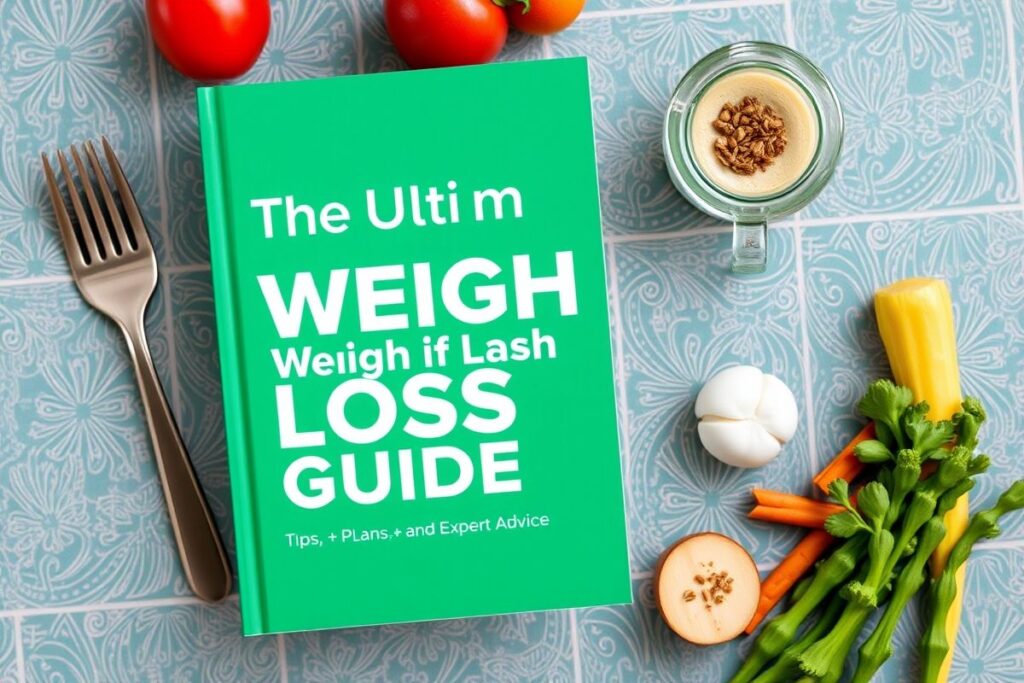
The Ultimate Weight Loss Guide: Tips, Plans, and Expert Advice

Embarking on a weight loss journey can feel overwhelming, with countless diets, workout routines, and conflicting advice circulating. But it doesn’t have to be complicated. This comprehensive guide aims to provide you with the knowledge, tools, and strategies you need to achieve sustainable and healthy weight loss. We’ll cut through the noise and offer practical, science-backed tips, sample meal plans, and expert insights to empower you to reach your goals. Forget fad diets and quick fixes; we’re focusing on long-term lifestyle changes that will not only help you shed pounds but also improve your overall well-being. Get ready to transform your relationship with food, exercise, and yourself.
This journey isn’t just about the numbers on a scale; it’s about feeling better, having more energy, and increasing your confidence. It’s about adopting habits that support your health for years to come. We will be exploring the crucial elements of successful weight loss, including nutrition, exercise, mindful eating, and stress management. We’ll also address common challenges and provide strategies for overcoming them. Whether you’re just starting out or looking to refine your approach, this guide offers valuable insights and actionable steps to help you achieve lasting results. Remember, consistency and patience are key; embrace the process and celebrate your progress along the way.
Understanding the Fundamentals of Weight Loss
Calorie Deficit: The Cornerstone of Weight Loss
At its core, weight loss hinges on creating a calorie deficit – consuming fewer calories than your body burns. This forces your body to tap into its stored energy reserves (fat) to fuel its functions. While this principle seems simple, understanding how to create a healthy and sustainable calorie deficit requires a nuanced approach. It’s not just about drastically cutting calories; it’s about making smart choices that nourish your body while promoting fat loss. This involves paying attention to the quality of your food, prioritizing whole, unprocessed foods, and understanding your individual caloric needs.
To determine your individual caloric needs, you can use online calculators or consult with a registered dietitian. These tools take into account factors like your age, gender, activity level, and current weight. Once you know your maintenance calorie level (the number of calories you need to maintain your current weight), you can subtract a reasonable amount (typically 500-750 calories per day) to create a calorie deficit. However, it’s crucial to avoid excessively restrictive diets, as they can lead to nutrient deficiencies, muscle loss, and metabolic slowdown. A moderate and sustainable approach is always the best strategy.
Furthermore, focus on filling your plate with nutrient-dense foods that are low in calories but high in volume, such as fruits, vegetables, and lean proteins. These foods will help you feel full and satisfied, making it easier to stick to your calorie goals. Pay attention to portion sizes and avoid mindless snacking. By making conscious food choices and understanding the principles of calorie deficit, you can effectively manage your weight loss journey and achieve lasting results. Remember to track your progress and adjust your calorie intake as needed to ensure you’re staying on track.
The Role of Macronutrients: Protein, Carbs, and Fats
While calorie deficit is fundamental, the macronutrient composition of your diet plays a crucial role in weight loss and overall health. Macronutrients – protein, carbohydrates, and fats – provide your body with energy and support various bodily functions. Understanding the roles of each macronutrient and how to balance them in your diet is essential for optimizing your results. Protein is vital for building and repairing tissues, preserving muscle mass during weight loss, and promoting satiety. Aim for a sufficient protein intake, especially during a calorie deficit, to minimize muscle loss and keep you feeling full.
Carbohydrates are your body’s primary source of energy. Choose complex carbohydrates like whole grains, fruits, and vegetables over simple carbohydrates like sugary drinks and processed foods. Complex carbohydrates provide sustained energy and are rich in fiber, which aids in digestion and promotes satiety. While reducing your overall carbohydrate intake can be beneficial for weight loss, it’s important to avoid eliminating them entirely, as they play a crucial role in fueling your workouts and supporting brain function.
Fats are essential for hormone production, nutrient absorption, and cell function. Focus on healthy fats like those found in avocados, nuts, seeds, and olive oil. Avoid trans fats and limit your intake of saturated fats. Healthy fats can also help you feel full and satisfied, making it easier to stick to your calorie goals. Aim for a balanced intake of all three macronutrients, tailored to your individual needs and preferences. Consulting with a registered dietitian can help you determine the optimal macronutrient ratio for your body and goals.
Crafting Your Weight Loss Plan
Sample Meal Plans: A Starting Point
Creating a weight loss meal plan can seem daunting, but it doesn’t have to be overly complicated. The key is to focus on whole, unprocessed foods and create meals that are both satisfying and nutrient-dense. Here are a couple of sample meal plans to get you started, but remember to adjust them based on your individual caloric needs and preferences.
Sample Meal Plan 1 (1500 calories):
* Breakfast: Oatmeal with berries and a sprinkle of nuts (300 calories)
* Lunch: Grilled chicken salad with mixed greens, vegetables, and a light vinaigrette (400 calories)
* Dinner: Baked salmon with roasted vegetables (broccoli, carrots, and sweet potatoes) (500 calories)
* Snacks: Apple slices with almond butter, Greek yogurt (300 calories)
Sample Meal Plan 2 (1800 calories):
* Breakfast: Smoothie with protein powder, spinach, banana, and almond milk (350 calories)
* Lunch: Turkey breast wrap with whole wheat tortilla, lettuce, tomato, and avocado (450 calories)
* Dinner: Lentil soup with whole grain bread (600 calories)
* Snacks: Hard-boiled eggs, a handful of almonds, and a small piece of dark chocolate (400 calories)
These meal plans are just examples, and you can easily adapt them to your own tastes and dietary restrictions. The important thing is to focus on getting a variety of nutrients from whole foods and staying within your calorie goals.
The Importance of Exercise: Cardio and Strength Training
Exercise is an integral component of a successful weight loss plan. It not only helps you burn calories but also improves your overall health, boosts your mood, and increases your muscle mass. A combination of cardio and strength training is ideal for maximizing your results. Cardio exercises, such as running, swimming, cycling, and brisk walking, are effective for burning calories and improving cardiovascular health. Aim for at least 150 minutes of moderate-intensity cardio or 75 minutes of vigorous-intensity cardio per week.
Strength training is crucial for building and maintaining muscle mass. Muscle tissue burns more calories at rest than fat tissue, so increasing your muscle mass can help boost your metabolism and make it easier to lose weight. Strength training also improves your strength, bone density, and overall physical function. Aim for at least two strength training sessions per week, targeting all major muscle groups. You can use weights, resistance bands, or bodyweight exercises.
Remember to start slowly and gradually increase the intensity and duration of your workouts. It’s also important to listen to your body and take rest days when needed. Exercise should be enjoyable, so find activities that you like and that fit into your lifestyle. Whether it’s dancing, hiking, or playing a sport, the key is to find something that you can stick with long-term.
Overcoming Challenges and Maintaining Success
Dealing with Plateaus and Setbacks
Plateaus and setbacks are a normal part of the weight loss journey. Don’t get discouraged if you hit a plateau or experience a temporary weight gain. It’s important to remember that weight loss is not always linear. Several factors can contribute to plateaus, including metabolic adaptation, changes in water retention, and inconsistencies in your diet and exercise routine. When you hit a plateau, it’s time to reassess your strategy and make adjustments. Consider tracking your food intake more closely to ensure you’re still in a calorie deficit.
You might also need to adjust your exercise routine. Try increasing the intensity or duration of your workouts, or incorporate new exercises to challenge your body in different ways. Sometimes, simply taking a break from dieting for a week or two can help reset your metabolism and kickstart your weight loss again. It’s also important to manage your stress levels, as stress can lead to increased cortisol levels, which can hinder weight loss. Practice relaxation techniques like meditation, yoga, or deep breathing exercises.
Setbacks are also inevitable. You might overeat at a party, skip a workout due to illness, or simply lose motivation. Don’t beat yourself up over these slip-ups. The key is to get back on track as quickly as possible. Forgive yourself, learn from your mistakes, and focus on making healthy choices moving forward. Remember that one bad day doesn’t ruin your progress. Consistency is key, so focus on making small, sustainable changes that you can maintain over the long term.
Mindful Eating: A Powerful Tool for Weight Management
Mindful eating is a powerful tool for managing your weight and developing a healthier relationship with food. It involves paying attention to your hunger and fullness cues, savoring each bite, and eating without distractions. Practicing mindful eating can help you avoid overeating, make healthier food choices, and develop a greater appreciation for food. Start by turning off the TV and putting away your phone during meals. Focus on the taste, texture, and smell of your food.
Eat slowly and chew your food thoroughly. Pay attention to your hunger and fullness cues. Ask yourself if you’re truly hungry or if you’re eating out of boredom, stress, or habit. Stop eating when you’re satisfied, not stuffed. Avoid eating directly from containers or bags, as this can lead to mindless overeating. Instead, serve yourself a portion on a plate and focus on savoring each bite.
Mindful eating is not about deprivation or restriction; it’s about developing a greater awareness of your relationship with food and making conscious choices that support your health and well-being. By practicing mindful eating, you can learn to enjoy food without guilt or anxiety and develop a more balanced and sustainable approach to weight loss. Remember that it takes time and practice to develop mindful eating habits, so be patient with yourself and celebrate your progress along the way.
Sıkça Sorulan Sorular
Conclusion
Achieving sustainable weight loss is a journey, not a destination. It requires a commitment to making healthy lifestyle changes that you can maintain over the long term. By understanding the fundamentals of calorie deficit, macronutrients, and exercise, you can create a personalized plan that works for you. Remember to be patient with yourself, celebrate your progress, and don’t get discouraged by setbacks. With consistency, dedication, and a positive mindset, you can achieve your weight loss goals and improve your overall health and well-being. Embrace the process and enjoy the journey towards a healthier, happier you.
“`
